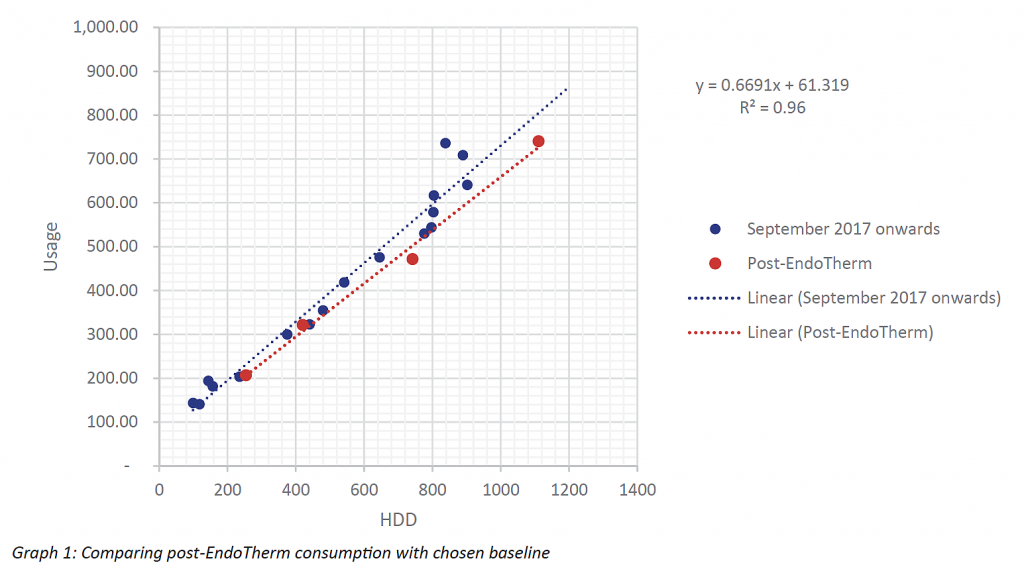Canadian Provincial Gov’t Reduces Building Emissions by 11.4%

The performance of EndoTherm was piloted by a Canadian Provincial Government and BGIS on one of their buildings, heated by 2 x 3500 MBH boilers.
Historic consumption was provided for the three years prior to EndoTherm installation. This can be normalized using heating degree day (HDD) data from a local weather station (at a base-load of 18ºC) to look at historical trends of consumption.
The data showed a clear increase in consumption over the past 18 months (since September 2017). The baseline will therefore be shortened to reflect this consumption change. Summer consumption will also be removed to provide a trend-line more reflective of the dataset during the colder winter months. The baseline also considers the base-load or gas consumption that is not related to space heating and thus not impacted by EndoTherm. A base-load of 10% has been suggested in a previous energy audit which is supported by the baseline trend-line.

The historical trend-line can be used to predict consumption based on the known HDD for the post-EndoTherm period. As displayed in Graph 1, the ‘predicted consumption’ for each month can be compared with the actual recorded consumption to identify a change in efficiency of the system during that month.

Result
Over the pilot period, the actual consumption achieved is 194.09GJ lower than the predicted consumption based on the historical trend-line (10% base-load). This is an 11.14% reduction in HVAC consumption for the four-month pilot period.
Based on the building’s average annual boiler consumption of 3797 GJ of natural gas, the 11.4% reduction achieved by EndoTherm will result in annual demand savings of 423 GJ. At the current total gas rate of $6.29 per GJ, this project will save approximately $2,660 per year in reduced utility bills.
Due to the low cost of EndoTherm, the public building will have a simple payback in less than two years. A reduction in natural gas consumption is also a direct reduction in carbon emissions. A saving of 423 GJ per year is the equivalent emissions reduction of 25,470 kg of CO2e. According to the EPA, this is the amount of carbon released by 5.5 passenger cars per year.




